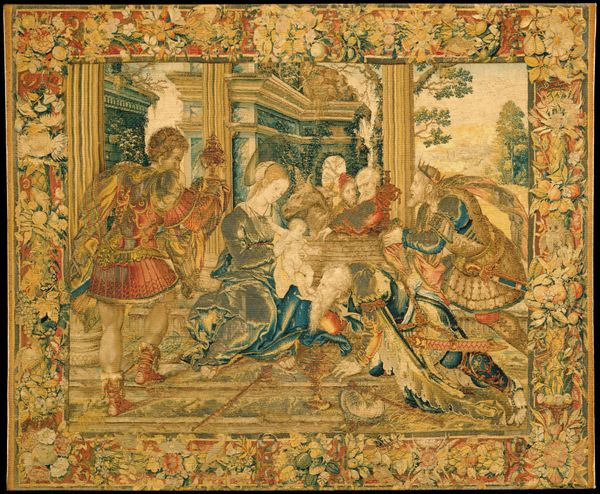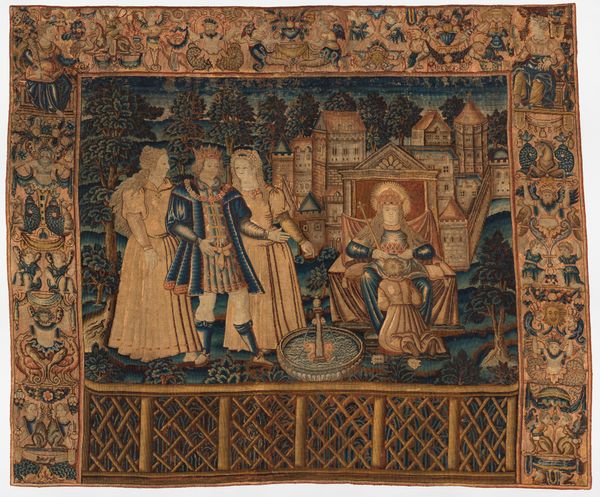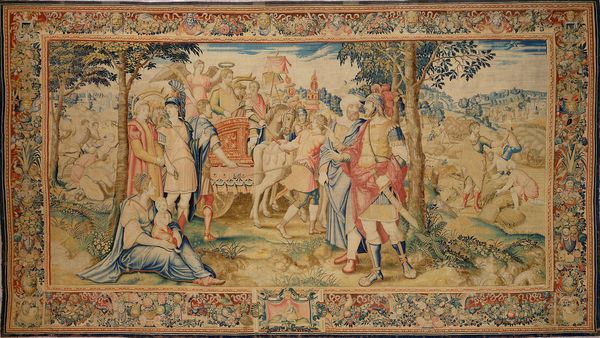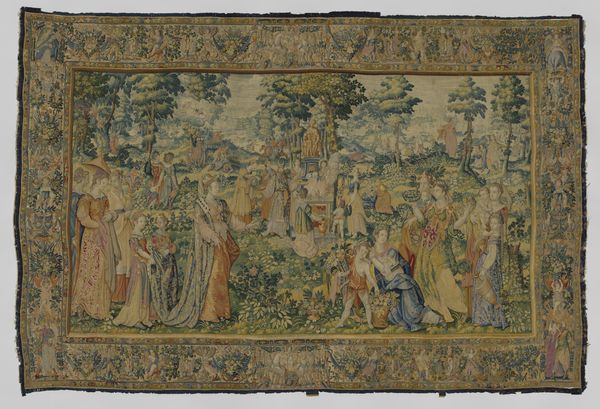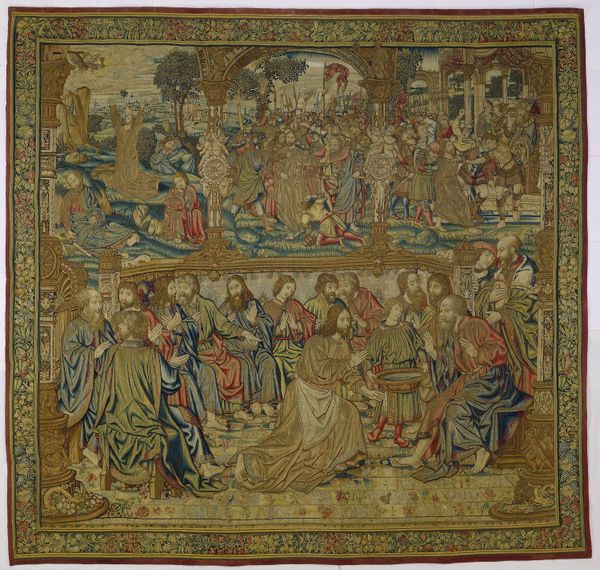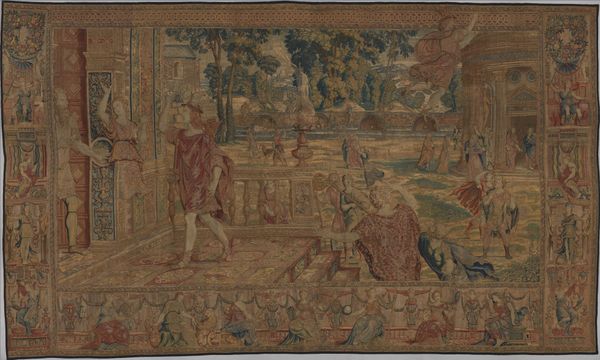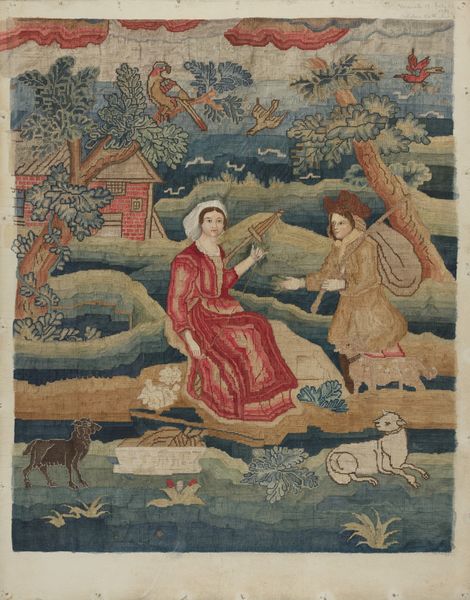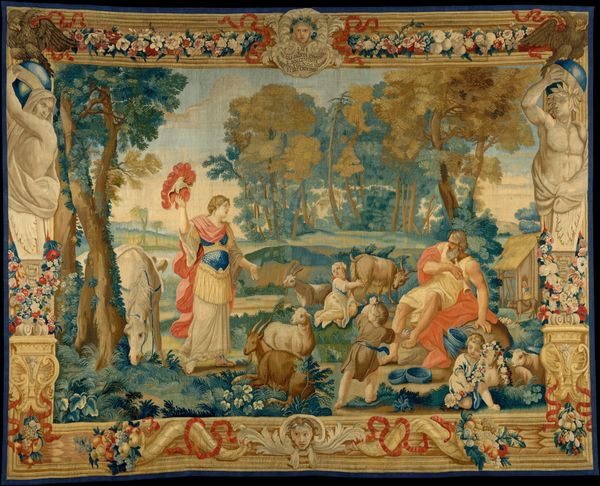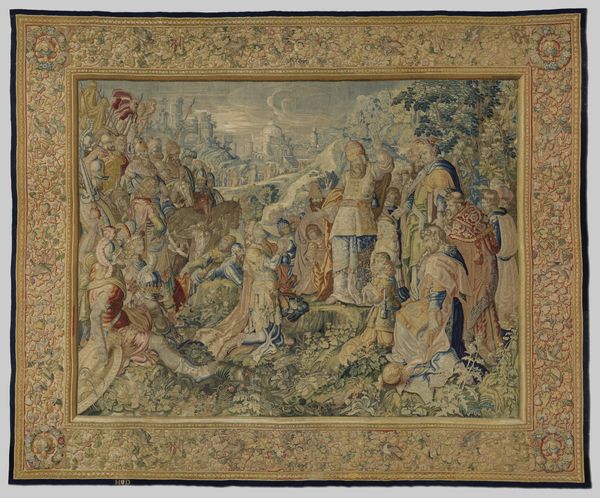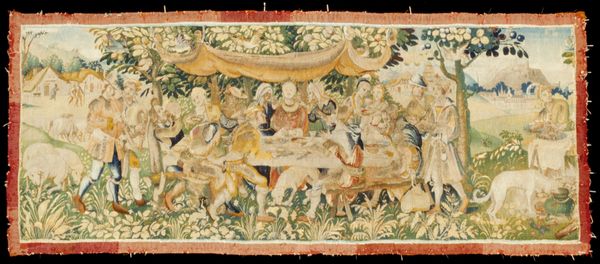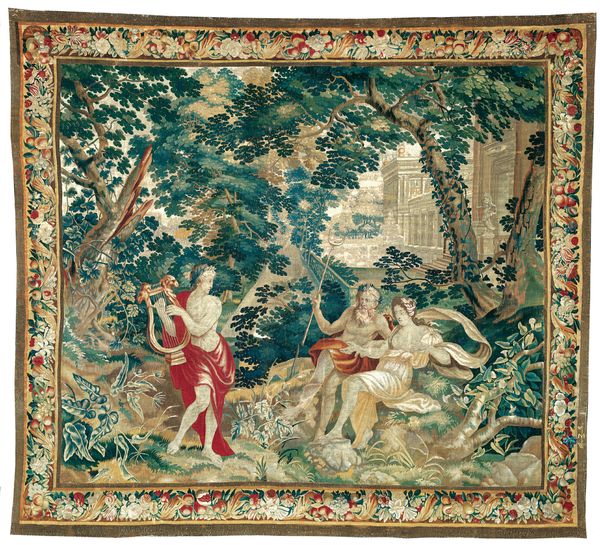
Christ Appearing to Mary Magdalene (Noli Me Tangere) 1540 - 1545
0:00
0:00
oil-paint, weaving, textile
#
narrative-art
#
oil-paint
#
weaving
#
landscape
#
textile
#
figuration
#
11_renaissance
#
oil painting
#
history-painting
Dimensions: 268 × 210.3 cm (105 1/2 × 82 3/4 in.)
Copyright: Public Domain
Curator: Standing before us is a woven tapestry of wool and silk, "Christ Appearing to Mary Magdalene," also known as "Noli Me Tangere," created around 1540-1545 by Willem de Pannemaker. Editor: What strikes me immediately is the pastoral serenity of it all. Even though the scene is of a deeply significant encounter, it’s presented with such softness. The delicate flowers in the foreground and the gentle colors create a mood of peaceful reverence. Curator: Absolutely. Pannemaker, known for his Brussels workshops, produced tapestries often for royal patrons, thus these tapestries functioned as dynastic displays of wealth and refined taste. Think about the space a work like this would have inhabited, perhaps a great hall within a castle, reinforcing cultural and political authority. Editor: And within that space, imagine how this scene of recognition would resonate. Mary Magdalene, kneeling before the resurrected Christ, reaching out with this potent symbol, the ointment jar. "Noli me tangere"—"Touch me not." It's such a charged moment. His simple command carries layers of symbolic meaning, about purity, separation, and the dawning of a new era. Curator: And that moment unfolds in a rather detailed landscape that provides not only a backdrop for this pivotal moment, but grounds the scene in familiar and accessible terms for viewers. We see a blend of the sacred and the secular. This tapestry would prompt contemplation of doctrine, while also reminding patrons of the importance of piety in daily life. Editor: Notice also how Christ's stance feels intentionally staged. He carries a gardening tool. It’s a way to make the divine more human. Mary’s red robes further underline her important role in salvation history, connecting to sacrifice and love. Red as an indicator of her spiritual devotion. Curator: Exactly. The deliberate display of materials like silk suggests the patron's interest in aligning themselves with sacred narratives. The tapestry thus reinforces that powerful message about religious authority. Editor: I find myself particularly drawn to the city in the backdrop, it serves to make this encounter so strangely immediate and timeless. The weaving gives it such depth. Curator: Tapestries, unlike paintings, invited physical interaction in the sense that one could touch them and feel the different textures, literally encountering these narratives in a tangible way. They shaped both physical space and the social imagination. Editor: Seeing it now, I am newly struck by the visual stories objects can tell through careful symbolic arrangements, and how something we perceive as static can contain so many layered messages and tactile experiences. Curator: Yes, and these textiles created centuries ago, continues to reveal to us the intersecting stories of artistry, devotion and power in the world.
Comments
No comments
Be the first to comment and join the conversation on the ultimate creative platform.

